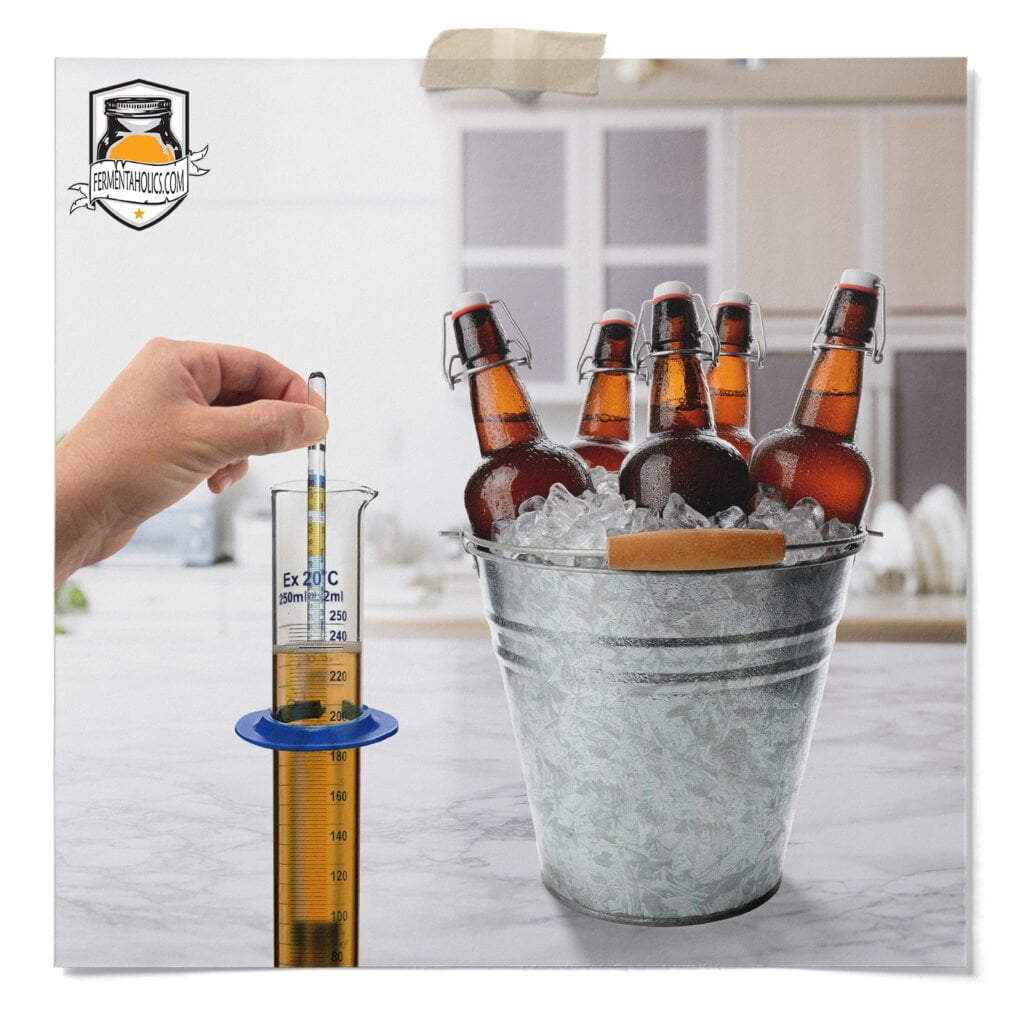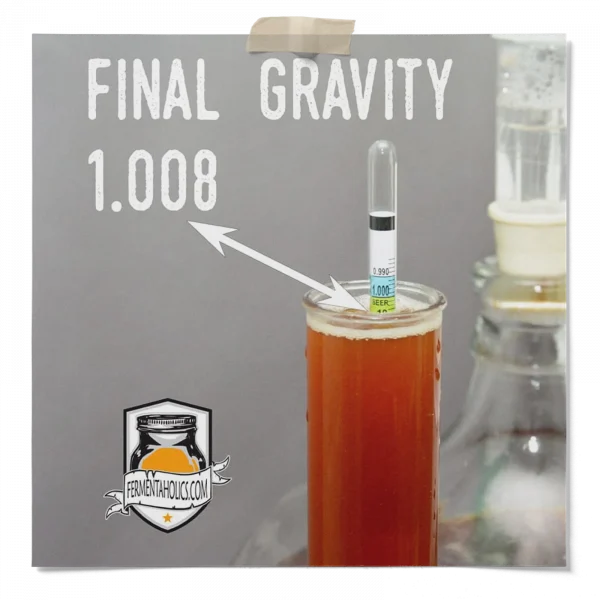
A hydrometer can serve several purposes; since you’re on our site, chances are you’re wondering what purpose a hydrometer serves in the world of fermentation. In this post, we will fine-tune the answer and cover what a hydrometer is and how it’s used in fermentation. In the simplest terms, a hydrometer is a tool that measures the density of a liquid using buoyancy. It tells us the density by quantifying a liquid’s viscosity or thickness (think syrup versus water) by taking a gravity reading with a hydrometer. Not clear? Don’t worry; we’ll break this down into something more digestible.
A hydrometer is a tool that determines the density of a liquid using buoyancy. For fermentation purposes, the hydrometer is used to take what is called a gravity reading. A gravity reading tells us the amount of a substance dissolved in a liquid, this substance being mostly fermentable sugar. So, in short, a gravity reading tells us the amount of dissolved sugar in a liquid.
To take a gravity reading, drop a hydrometer in the liquid you want to test. Now read the number on the side of the hydrometer at the liquid surface. The less it sinks, the denser the liquid. The more it sinks into the liquid, the thinner the liquid – think syrup versus water. In our example below, the gravity reading shows 1.065. Our Triple Scale Brewing Hydrometer has three different scales that allow you to simultaneously read your gravity in three different ways – Specific Gravity, potential alcohol content, and Brix.
Gravity readings tell us the amount of sugar dissolved in a liquid. This is important to know, as sugar is food for yeast. Knowing the amount of sugar in a liquid before fermentation (amount of yeast food), we can predict the eventual alcohol content before fermentation occurs.
Once the fermentation is complete, we take another gravity reading. This updated reading tells us how much sugar remains in the liquid or how much of the sugar the yeast consumed during fermentation. Now that we know both the original sugar content (Original or Starting Gravity) and the final sugar content (Final Gravity), we can directly plug these two gravity readings into a formula to get the alcohol content. To measure the alcohol content, it’s important to have both of these readings.
So let’s go over each one – Original Gravity, Final Gravity, and how to determine ABV.
The Original Gravity is taken to determine the amount of sugar in your liquid before fermentation. This gives the brewer an idea of the potential alcohol content in the final product. The amount of available sugar determines whether the desired alcohol content is achievable, i.e., do you have enough sugar in the brew? You will quickly notice that most recipes, instructions, and grain bills will list target starting gravities for which to aim. Original gravity readings are essential to know how your batch/brew compares to the recipe or if you reached your target starting gravity. From the sample hydrometer gravity reading, the starting gravity is 1.065.
The Final Gravity reading is taken after a period of fermentation and after the yeast has had time to consume available sugars. Taking a F.G. reading is vital as it shows us how much sugar remains after fermentation. The more sugar consumed by the yeast, the more alcohol was produced. As the yeast consumes the sugar, the sugar content is reduced and replaced with alcohol. Alcohol is thinner than water, so as it ferments, the density of the liquid changes, thinning it out (less sugar, not as thick). As it thins out, the gravity points lower as well.

Much like the original gravity, brewing instructions, recipes, and grain bills will also include a final target gravity. So if your target gravity isn’t reached when taking this reading, allow it to ferment longer and check back at a later date. As you can see, these readings help gauge the success of the fermentation.
From the example pictured above, the final gravity is 1.008. Now that we have the final gravity reading, we can compare it with the Original Gravity reading. We can now see how much of the sugar was consumed by the yeast and converted into ethanol, which brings us to determining alcohol content.
Once you have your Starting Gravity and Final Gravity, determining your brew’s alcohol content is easy. You simply take the two gravity readings and plug them into the formula below; you can now calculate the alcohol content of your batch.
If your original Gravity was 1.065 and Final Gravity 1.008, we can plug these figures into the formula to get the ABV.
So, using this formula, the alcohol content would be 7.48%.
That’s it. It’s that easy. Do you have any questions not covered here? Be sure to drop them in the comment section below.
Dont feel like doing the math?
Check out our ABV Calculator and easily calculate the alcohol content of your beer, wine, mead, cider, or any other fermented creation. It’s that easy.
